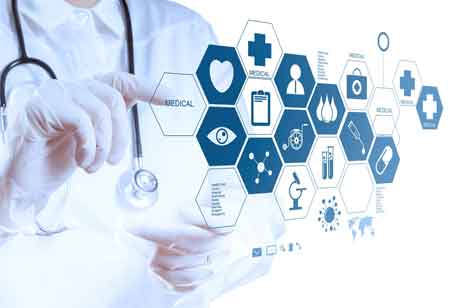THANK YOU FOR SUBSCRIBING
How has Technology Transformed Healthcare?
EHR generates automated alerts to the treating physician of potential health issues. EHRs can be accessed from any nearby medical facility, which is extremely helpful for doctors examining non-local patients.

By
Apac CIOOutlook | Monday, November 23, 2020
Stay ahead of the industry with exclusive feature stories on the top companies, expert insights and the latest news delivered straight to your inbox. Subscribe today.
EHR generates automated alerts to the treating physician of potential health issues. EHRs can be accessed from any nearby medical facility, which is extremely helpful for doctors examining non-local patients.
Fremont, CA: Technology is disrupting every industry, including the healthcare industry. There is no doubt that technology has improved the quality of healthcare.
Electronic Health Records (EHRs) have replaced outdated paper records. It has changed the game for everyone in the medical world. Medical coding professionals, medical assistants, and registered nurses- these are some of the few roles that play a significant part in this industry-wide implementation.
Technicians and nurses are input patient data into a digitized, central system. Medical coders' and billers' appointments update patient records with diagnostic codes as well as submit medical claims to insurance companies.
See Also: Healthcare Business Review Magazine
Patients can access their records with just a click, and it can also ensure that mistakes are caught more quickly.
Let us look at the impact of technology in healthcare:
Improved Patient Care
EHR generates automated alerts to the treating physician of potential health issues. EHRs can be accessed from any nearby medical facility, which is extremely helpful for doctors examining non-local patients.
Public Health Has Improved
EHRs can deliver invaluable data to clinical researchers, which help enhance medical knowledge and the development of treatments for common health problems such as viral outbreaks.
A standardized health IT system can also offer insights into how big an outbreak is, allowing for preventative measures such as increased flu shot vaccine production to be put in place much faster.
Streamlining Workflow
Medical coders and billers are some of the most important health workers. As per the Bureau of Labor Statistics, the demand for this sector is expected to increase by 13 percent from 2016 to 2026. The advent of EHRs has only made life easier for medical coders and billers. Entering data into a digital system is much less time-absorbing than paper-based methods, and it decreased the risk of errors in financial details and patient data.





